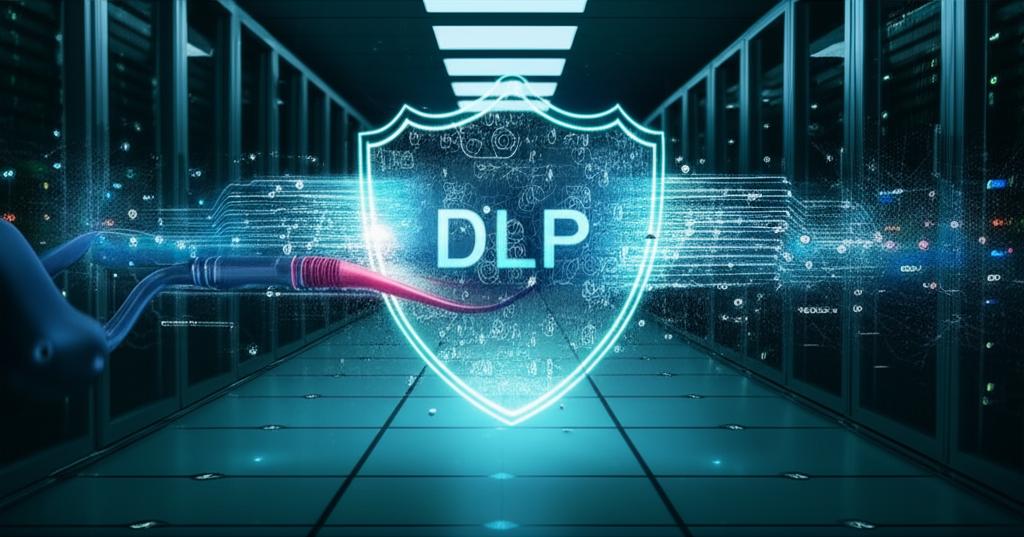Data Loss Prevention (DLP) Solutions: Safeguarding Your Business Data
Understanding Data Loss Prevention (DLP) Solutions
In today’s digital landscape, data is the lifeblood of every organization. From sensitive customer information to proprietary intellectual property, the volume and value of digital data continue to soar. However, with this growth comes an escalating risk of data breaches, accidental leaks, and insider threats. This is where Data Loss Prevention (DLP) solutions become indispensable, acting as a critical line of defense for your most valuable assets.
What is Data Loss Prevention (DLP)?
Data Loss Prevention (DLP) is a comprehensive set of technologies and strategies designed to prevent sensitive information from leaving a corporate network, whether intentionally or unintentionally. DLP solutions work by identifying, monitoring, and protecting data in various states: data in use (accessed by applications), data in motion (moving across networks), and data at rest (stored on servers, databases, or endpoints).
Why Are DLP Solutions Crucial for Modern Businesses?
The imperative for implementing robust DLP strategies stems from several critical factors:
- Preventing Data Breaches: DLP proactively stops sensitive data from being exfiltrated by malicious actors or accidentally shared by employees, mitigating the devastating financial and reputational impact of a breach.
- Ensuring Regulatory Compliance: Strict regulations like GDPR, HIPAA, CCPA, and PCI DSS mandate the protection of personal and financial data. DLP helps organizations meet these compliance requirements, avoiding hefty fines and legal repercussions.
- Protecting Intellectual Property: For businesses reliant on proprietary information, DLP safeguards trade secrets, product designs, and research data from falling into the hands of competitors.
- Minimizing Insider Threats: Whether negligent or malicious, employees can pose a significant risk. DLP monitors and controls how employees handle sensitive data, preventing unauthorized sharing or theft.
- Maintaining Brand Reputation: A single data breach can severely damage a company’s trustworthiness and brand image. DLP helps maintain customer confidence by demonstrating a commitment to data security.
How Do DLP Solutions Work?
DLP operates through a multi-faceted approach involving:
- Data Discovery and Classification: The first step is to identify where sensitive data resides across the organization’s network, endpoints, and cloud environments. Data is then classified based on its type (e.g., PII, financial, healthcare, IP) and sensitivity level.
- Content and Contextual Analysis: DLP solutions use advanced techniques to analyze data content (e.g., keyword matching, regular expressions, fingerprinting, machine learning) and context (e.g., user, application, destination, file type) to determine if it contains sensitive information.
- Policy Enforcement: Based on predefined policies, DLP enforces actions when sensitive data attempts to leave the controlled environment or is misused internally. These actions can include blocking the transmission, encrypting the data, quarantining the file, or alerting security personnel.
- Monitoring and Reporting: DLP continuously monitors data flows and user activities, providing detailed audit trails and reports. This allows organizations to identify patterns of risky behavior, investigate incidents, and demonstrate compliance.
Key Features of Effective DLP Solutions
A robust DLP solution typically includes features such as:
- Granular Policy Control: The ability to create highly specific rules based on data type, user roles, destination, and communication channels.
- Multi-Channel Protection: Covering email, web, instant messaging, cloud storage, removable media (USB), print, and network shares.
- Endpoint Agent: For monitoring and controlling data on individual workstations and laptops.
- Network Monitoring: Inspecting all network traffic for sensitive data transmission.
- Cloud Integration: Extending DLP policies to SaaS applications and cloud storage platforms.
- Advanced Analytics and Reporting: Dashboards, alerts, and detailed logs for incident response and compliance auditing.
- Automated Remediation: Actions like encryption, quarantine, or blocking to prevent data loss in real-time.
Types of DLP Deployments
DLP solutions can be deployed in various forms to cover different aspects of an organization’s IT infrastructure:
- Network DLP:
- Monitors all network traffic (email, web, FTP, etc.) to prevent sensitive data from leaving the corporate network.
- Endpoint DLP:
- Installed directly on user workstations and servers to monitor and control data access, transfers to USB drives, print jobs, and application usage.
- Cloud DLP:
- Specifically designed to protect data stored in cloud services (e.g., Dropbox, Google Drive, Office 365) and SaaS applications.
- Storage/Data at Rest DLP:
- Scans file shares, databases, and other data repositories to discover and classify sensitive information, often leading to encryption or relocation.
Challenges of DLP Implementation
While beneficial, implementing DLP can present challenges:
- False Positives: Overly aggressive policies can block legitimate business activities, leading to user frustration.
- Complexity: Configuring and managing a DLP system requires expertise and continuous refinement of policies.
- Cost: DLP solutions can be a significant investment, especially for large enterprises.
- User Adoption: Employees may resist new security measures if they perceive them as hindrances to their productivity.
Choosing the Right DLP Solution
Selecting an appropriate DLP solution involves considering several factors:
- Your Organization’s Specific Needs: What kind of data do you need to protect? Where does it reside? What compliance regulations apply?
- Scalability: Can the solution grow with your business and data volume?
- Integration: Does it integrate well with your existing security infrastructure (SIEM, IAM, etc.)?
- Ease of Use: A user-friendly interface and straightforward policy management are crucial for effective operation.
- Vendor Support: Reliable technical support and a strong vendor roadmap are important.
Conclusion
Data Loss Prevention (DLP) solutions are no longer a luxury but a fundamental necessity for any organization committed to protecting its digital assets, maintaining compliance, and preserving its reputation. By understanding how DLP works, its benefits, and the various deployment options, businesses can implement a robust strategy that significantly reduces the risk of data loss and fosters a more secure operational environment.







